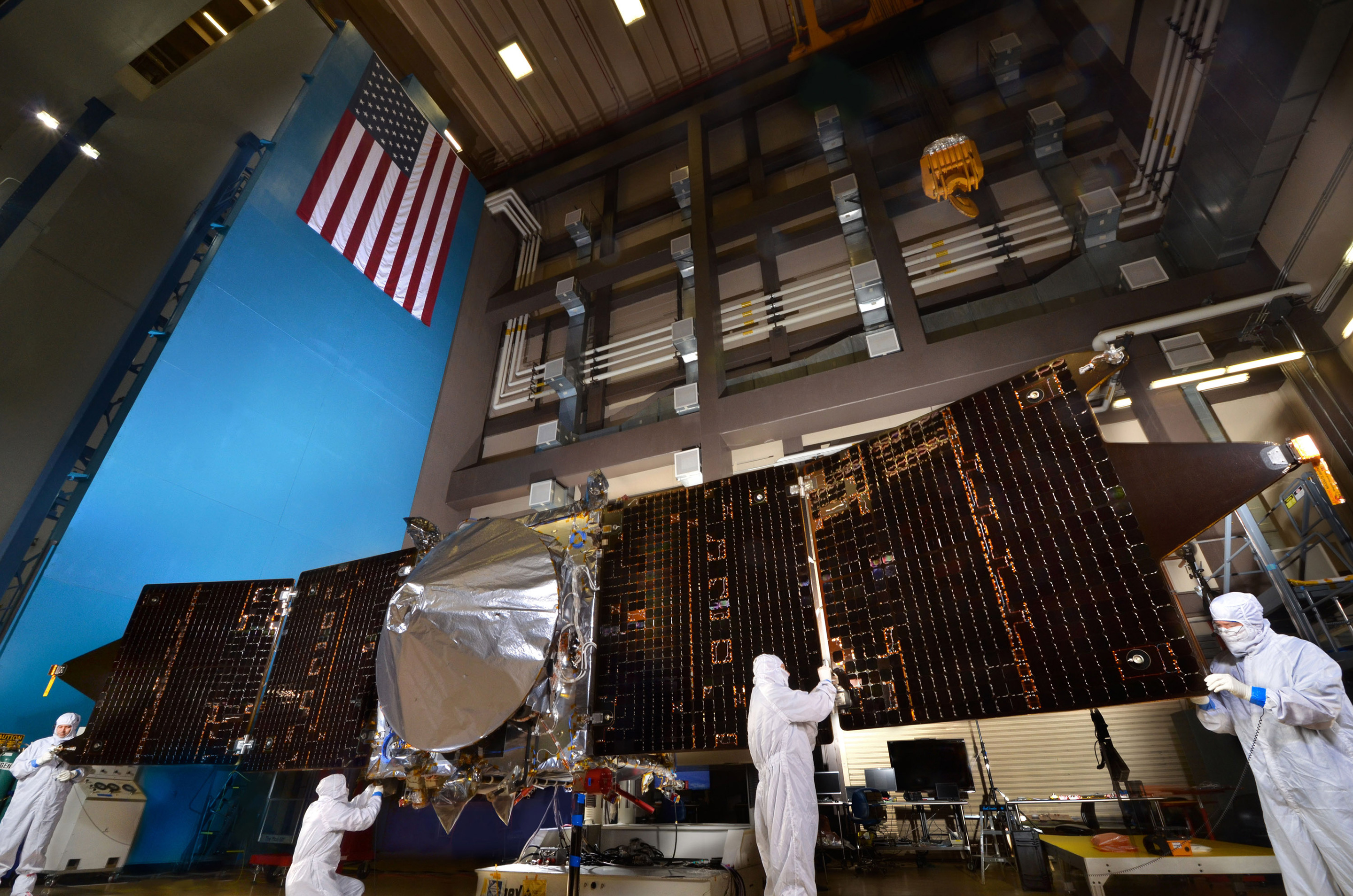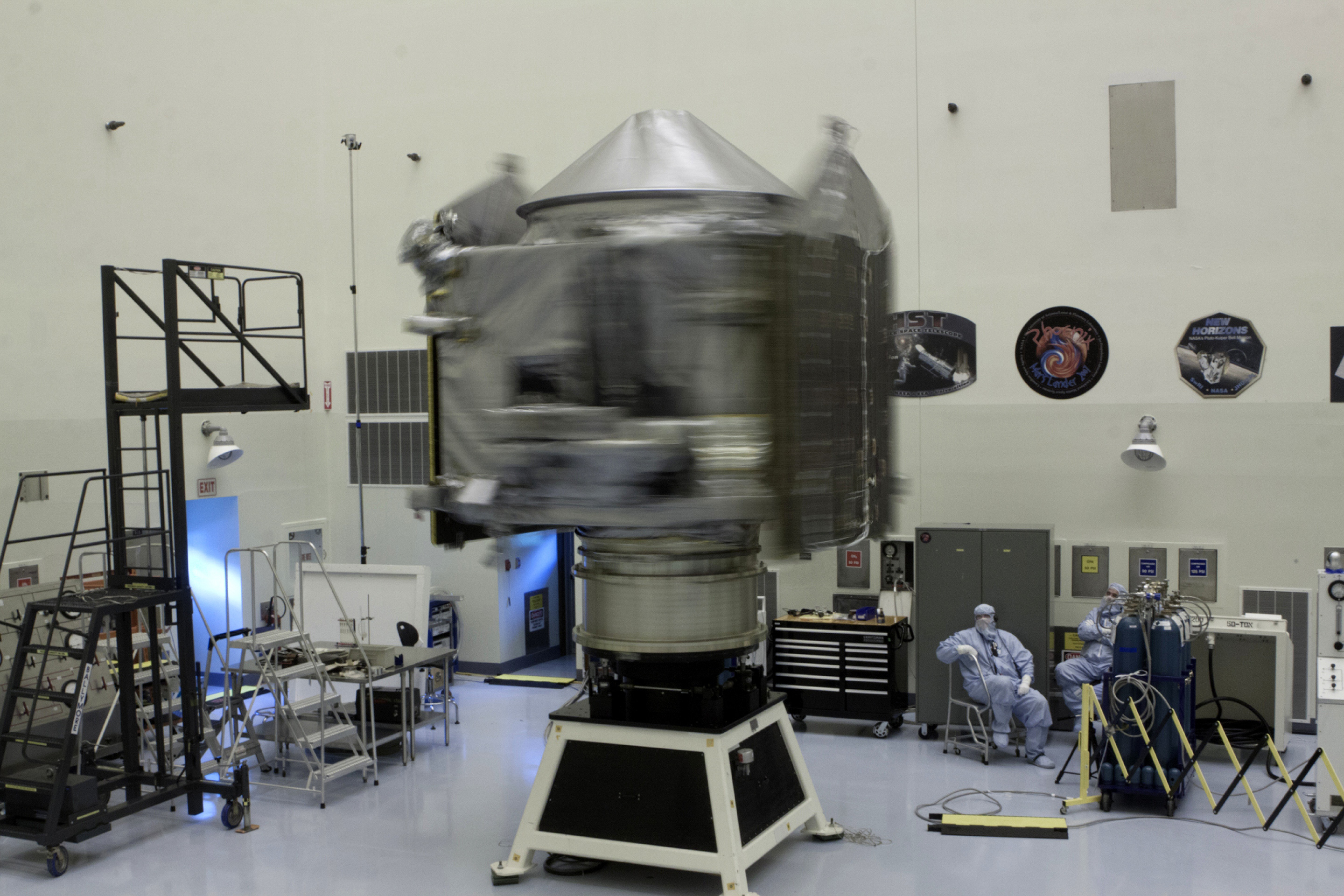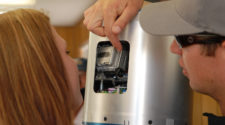
MAVEN (Mars Atmosphere and Volatile EvolutioN Mission) is NASA’s next mission to Mars. After a decade of hard work by dedicated science and engineering teams, it is scheduled to lift off on Nov. 18, 2013 from Cape Canaveral, Florida on an Atlas V 401 rocket. The 903 kilogram (2000 pound) probe will arrive at the Red Planet in September 2014 after a 10 month interplanetary voyage.
It is the first spacecraft from Earth devoted to investigating and understanding the upper atmosphere of Mars. The purpose is to study specific processes and determine how and why Mars lost virtually all of its atmosphere billions of years ago and what effect that had on the history of climate change and habitability.
“MAVEN’s goal is determining the composition of the ancient Martian atmosphere and when it was lost, where did all the water go and how and when was it lost,” said Bruce Jakosky in an interview at the Kennedy Space Center. Jakosky, of the University of Colorado at Boulder, is the MAVEN Principal Investigator.
Scientists hope measurements from MAVEN’s suite of nine science instruments will help answer critical questions like whether the Martian atmosphere was once substantial enough to sustain liquid water on its surface and support life.
I personally inspected MAVEN inside the clean room at the Kennedy Space Center with chief scientist Bruce Jakosky, just prior to the partial shutdown of the US government on Oct. 1. In an ultra rare viewing opportunity the solar panels were fully unfurled.
“MAVEN is on schedule and under budget” said Jakosky in an interview as we stood a meter away from the nearly fully assembled spacecraft. “The solar panels look exactly as they will be when MAVEN is flying in space and around Mars. To be here with MAVEN is breathtaking. Its laid out in a way that was spectacular to see!”
The US government shutdown temporarily stopped all work but the mission was granted an “emergency exemption” after three days of no work.
“We are working toward being ready to launch on Nov. 18,” Jakosky told me. “We think it’s very feasible.”
MAVEN’s finding are key to understanding when and for how long Mars was much more Earth-like compared to today’s desiccated Red Planet.
“The major questions about the history of Mars center on the history of its climate and atmosphere and how that’s influenced the surface, geology and the possibility for life,” said Jakosky.
“MAVEN will focus on understanding the history of the atmosphere, how the climate has changed through time, and how that influenced the evolution of the surface and the potential for habitability by microbes on Mars.”
“We don’t know the driver of the change.”
“Where did the water go and where did the carbon dioxide go from the early atmosphere? What were the mechanisms?”
“That’s what’s driving our exploration of Mars with MAVEN,” said Jakosky
MAVEN carries nine sensors in three instrument suites. The Particles and Fields Package, provided by the University of California at Berkeley with support from CU/LASP and NASA’s Goddard Space Flight Center in Greenbelt, Md., contains six instruments to characterize the solar wind and the ionosphere of Mars. The Remote Sensing Package, built by CU/LASP, will determine global characteristics of the upper atmosphere and ionosphere. The Neutral Gas and Ion Mass Spectrometer, built by Goddard, will measure the composition of Mars’ upper atmosphere.
MAVEN will execute five deep dip maneuvers during the first year, descending to an altitude of 78 miles. This marks the lower boundary of the planet’s upper atmosphere.

MAVEN has sufficient fuel on board to continue observations for more than a decade.
The spacecraft will function as an indispensible orbital relay by transmitting surface science data through the “Electra” from NASA’s ongoing Curiosity and Opportunity rovers as well as the planned 2020 rover.
Interestingly, the ‘’emergency exemption” was granted because of MAVEN’s additional secondary role as a communications relay for Curiosity and Opportunity – and not because of its primary science mission.
“MAVEN is required as a communications relay in order to be assured of continued communications with the Curiosity and Opportunity rovers,” Jakosky said.
Although NASA has two functioning orbiters circling the Red Planet at this moment, they are getting old, are far beyond their original design lifetimes and suffer occasional glitches. And there is no guarantee of continued operation.
“The rovers are presently supported by Mars Odyssey launched in 2001 and Mars Reconnaissance Orbiter launched in 2005. Launching MAVEN in 2013 protects the existing assets that are at Mars today,” Jakosky told me.
If Mars Odyssey and/or Mars Reconnaissance Orbiter were to fail, then the rovers mission operations would be severely curtailed and could even be terminated prematurely – in a worst case scenario.
And without MAVEN, there would be no point in launching NASA’s planned 2020 rover since there would be no way to transmit the science data back to Earth.
“There is no NASA relay orbiter at Mars planned post-MAVEN,” Jakosky noted.
If MAVEN has to launch later in December 2013 or is forced to be postponed to the next launch window opportunity in 2016, both the communications relay capability and the mission’s atmospheric science objectives would have been very badly impacted.
“A delay in the launch date by more than a week past the end of the nominal launch period, or a delay of launch to 2016, would require additional fuel to get into orbit. “
“This would have precluded having sufficient fuel for MAVEN to carry out its science mission and to operate as a relay for any significant time,” Jakosky elaborated.
“Launching in 2013 allows us to observe at a good time in the eleven-year solar cycle.”
If all goes well, NASA’s MAVEN orbiter and India’s MOM (Mars Orbiter Mission) will “work together” to help solve the mysteries of Mars atmosphere, Jakosky told me.
“We plan to collaborate on some overlapping objectives between MAVEN and MOM. We have had some discussions with the MOM science team.”
“At the point where we [MAVEN and MOM] are both in orbit collecting data we do plan to collaborate and work together with the data jointly. We agreed on the value of collaboration and will hold real discussions at a later time,” he noted.



